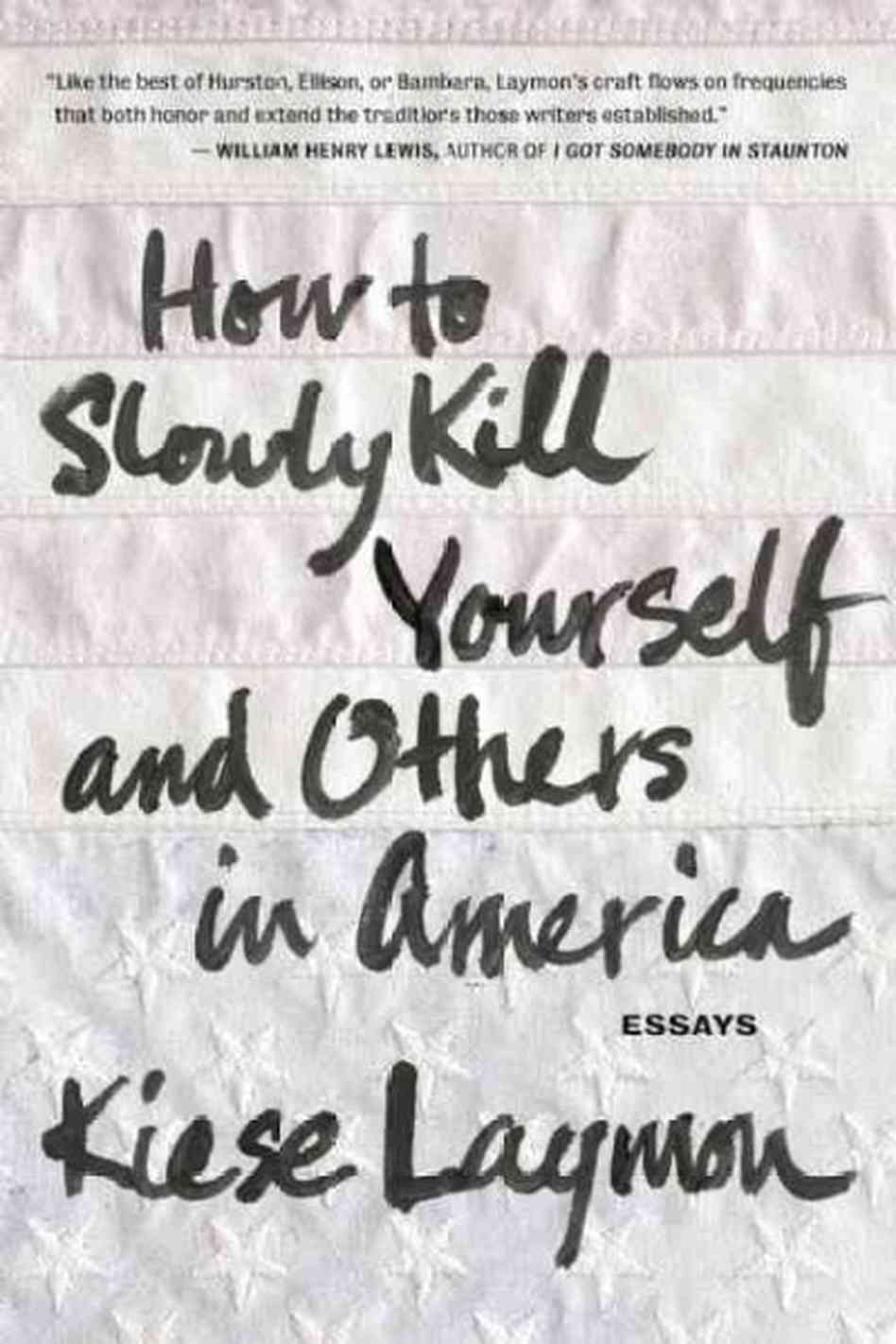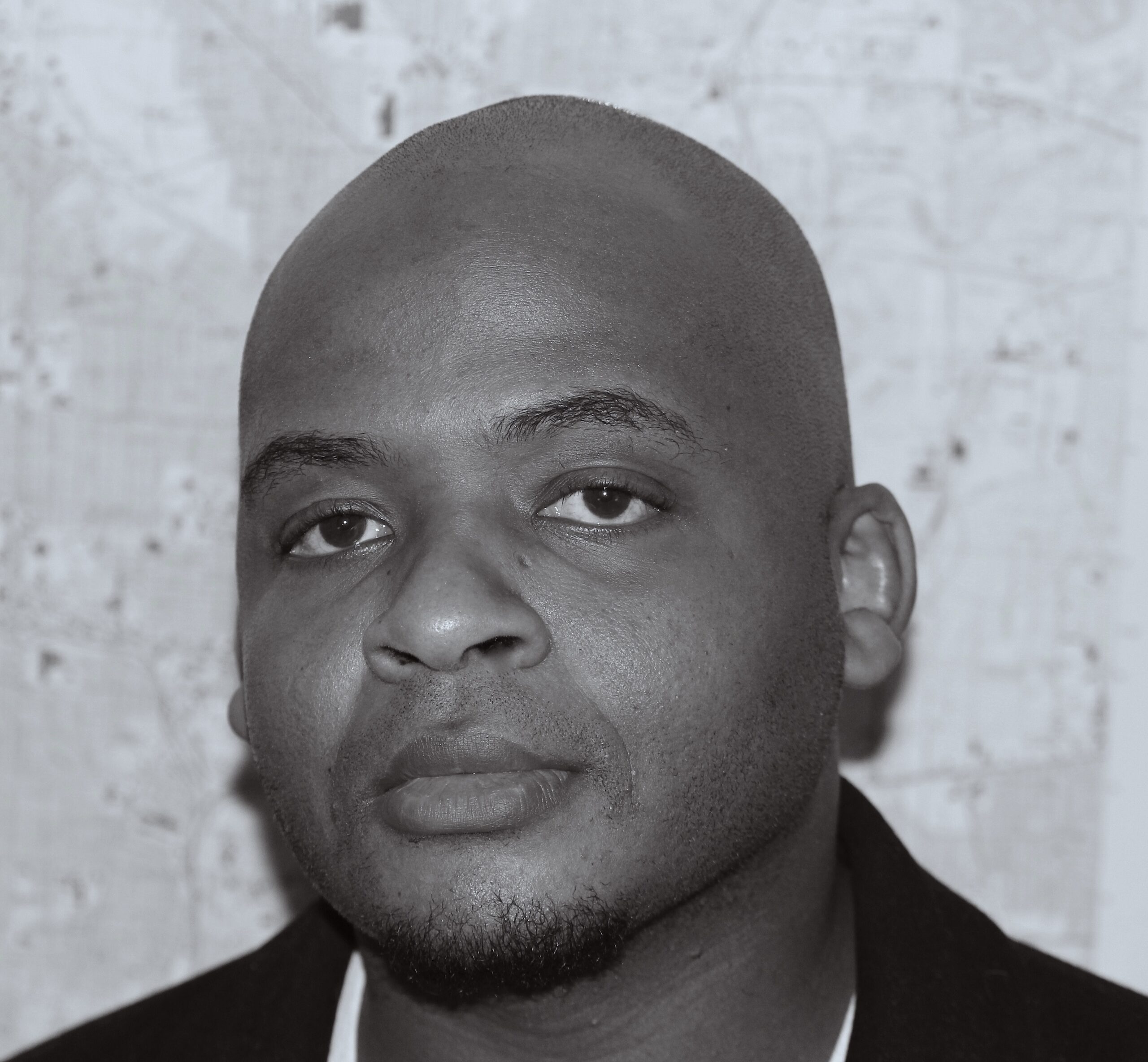Kiese Laymon first caught my eye when his essay, “You Are the Second Person,” was published in Guernica from his collection, How to Slowly Kill Yourself and Others in America. That morning I decided to read several of my bookmarked longreads, but Kiese’s essay was the only bookmarked essay I managed to read. Kiese’s was the first and only bookmarked essay I read that day. Seven hours later, I was still at home, talking about his essay with close friends and writers online. We shared it across our social networks and opened google chats to discuss its finer points. The very next morning, I walked down Crenshaw to Eso Won Bookstore and purchased Kiese’s young adult novel, Long Division.
Long Division is the story of Citoyen “City” Coldson, a husky, black teenage boy who time travels with the help of a mysterious novel, titled Long Division and his friend and heart’s desire Shalaya Crump. City discovers the mysterious book is a roadmap to the past narrated by a 1985 version of himself. City and Shalaya whizz back and forth through space and time to 1964, 1985 and 2013 and literally find themselves. During his journey, City becomes aware of race, gender and violence in a way that causes him to think deeply about the kind of person he wants to be in the world —Long Division, the novel-within-a-novel, acting as a touchstone for epiphany and self-reflection. City and Shalaya’s quest to change history is thwarted by the butterfly effect—2013 City ultimately realizes that it’s impossible to go back in time without losing something.
I found Long Division to be a brave and ambitious but incongruent first novel. While I loved the cast of characters, I had trouble with the plotting and sequencing. After reviewing the book online, Kiese told me I was the kind of reader he wanted for his work, one who was honest and critical, and I decided I wanted to talk more with Kiese Laymon about his work.
Over the course of three weeks, we exchanged email correspondence. I learned that he was exhausted but thankful for his reading tour, replying to emails from his hotel room in the middle of the night. I was talking to a writer who was basking in the newness of it all—first tour, first books, first interviews and readers. We conversed about the novel, his essay collection, literary intentions and the not so far off future.
***
The Rumpus: When I read “You Are The Second Person,” I found the essay vulnerable and honest and a refreshing departure. Can you talk more about your approach to the confessional in the narrative essay?
Kiese Laymon: I’m interested in how the confessional is so abrasively critiqued today. I’m not really comfortable with simply confessing but I do think “confessing” is a major part of reckoning. One of the problems with a lot of “confessional” writing is that it starts and stops with the confessional and doesn’t really tie the “I” into a “we” at all. I’m still surprised at how mad critics get at that kind of confessional writing. They call it “navel-gazing” and “self-indulgent” but really it’s often just writing that needs four or five more revisions. That’s it.
Rumpus: Your entire essay collection reads like a memorial: the echos, the reverberations, the names and cases you mention, the numeration, the years; you are transversing time with the dead. In effect, you are insisting on keeping them alive, aren’t you?
Laymon: The essay collection is really about keeping us alive and healthy through commitment to honesty, community and life.
Rumpus: And Uncle Jimmy. You begin the essay collection with a letter to your uncle, reminding me of James Baldwin’s letter to his nephew in Notes of a Native Son. Uncle Jimmy breaks my heart.
Laymon: Jimmy’s spirit still breaks my heart. But it’s ok. Sometimes you’re not sure about parts of an essay. You not sure if you were honest. I was completely honest in my exploration in the Jimmy piece, in “Kanye West and HaLester Myers Are Better at Their Jobs,” “How to Slowly Kill Yourself and Others in America,” “You Are the Second Person” and the letter to my Mama, “Epilogue: My First Teachers—A Dialogue.” The others I still need to work on. Those are some of the few things I’ve created and known they were beautiful and honest.
Rumpus: What is the work of your novel to you and how does your approach to the essay differ from your approach to the novel?
Laymon: In essay writing, I’m trying to push the form of expository writing. I’m trying to remember, trying to reckon, trying to find connections with the world, the nation and me, but I’m always trying to push the form, too, without being too obvious that I’m trying to push the form. The “How to Slowly Kill Yourself and Others” essay was so hard to write because of the memories, the sensory stuff, but also because it didn’t follow the form of any essay that I’ve ever read. And the truth that I was exploring necessitated that obliteration of traditional form, I think.
There’s so much to the work of the novel for me. First of all, the novel should be a critique of the novels that have come before it in a language that broadens the audience of American literature. Second, it’s really got to be invested in a number of what-if questions. I wish every American explored the importance of novel writing, identity, honesty, character and place in fresh-ass ways.
Rumpus: When I finished your novel, Long Division, I immediately thought Back to The Future meets Alice in Wonderland meets an Outkast video. Why did you decide to use the Back To The Future franchise as a narrative map for Long Division?
Laymon: I allude to Back to the Future in the 1985 story to let folks know it was an inspiration and because it literally was the most time-travelly bit of pop culture we had in the mid 80’s. I can talk about their tools for considering change. First, the book is metafictive in a traditional sense where I’m showing and telling the reader that the act of writing and reading is a reflexive way to push boundaries of real and literal time travel. Writers and readers are time travellers. The question is what we do with that time we traveled when we leave a book, leave a page. Courage and curiosity and love for community are really all these characters, this writer, and my real community had. They changed the future with that courage and curiosity, but it’s not pretty.
Rumpus: Baize Shephard is a leading lady and her queerness is implicit in the text, while City works through his sexuality with the reader. Queering texts is obviously essential to your work.
Laymon: Body and queerness are so important to the book and nearly all the young characters. I wanted to create a book that was unafraid of black bodies, yet super interested in thinking about the relationship of love to body and sexuality without relying on tired understandings of “gay” “bi” or “straight.” Baize’s queerness is explicit to me, but implicit to City. He reads her rhyme, and he hears her say that she’s not into boys, etc. But he doesn’t register it as meaning much. I’m hoping readers get his blindness, without indulging in it.
Rumpus: The subcutaneous layer of your work has the kind of violence that is reminiscent of Richard Wright, yet your epigraphs and essays are nods to Baldwin. Can you say more about Mississippi’s rich literary heritage and the impact of its writers, namely Richard Wright and William Faulkner, on your work? Can a Mississippi writer be Mississippi without conjuring those narratives?
Laymon: I think the necessary violence that Wright explored and maybe sometimes exploited is really different than most of the violence in my work. I’m never interested in violence without love. The essay “How to Slowly Kill Yourself and Others,” for example, is in one way about following guns and gun deaths of young black women and men in our nation. I’m literally asking us to think about the life those young folks lived before dying. I’m asking us to think about what they loved, what love did to them, before they died. Not sure Wright allowed himself to really work through love. That impulse in my work comes from Baldwin, Octavia Butler and my Aunt Sue.
Rumpus: Yes, Octavia Butler. Do you consider yourself an Afrofuturist or Afrosurrealist?
Laymon: That’s a stunner question right there. Thanks for taking me seriously. I’m a black writer from Mississippi. That’s what I most consider myself. Long Division has a lot of Afrosurrealist impulses. I think the book was more Afrofuturist when it was like 700 pages.
Rumpus: Earlier you mention revisions. Like most writers I am obsessed with the habits and practices of other writers. What are your rituals?
Laymon: I write two hours in the morning and two hours before bed no matter. No matter what. I also write during the day if I have to get something down, but the four hours a day is the one thing in my life I don’t fool with. I’m an obsessive writer who needs and loves revision. Writing helps me learn and helps me teach. I’m also, than anything else, a teacher and a student. And without the four hours, I’m pretty monsterish. For real.
Rumpus: Four hours a day is quite impressive. 1-2 hours a day is always my goal. When I can’t write, I read and read and read.
Laymon: I’m not good enough to write any less than I do, you know? I’m not good enough as a person and definitely not good enough as a writer.
Rumpus: As a writer, who are you accountable to?
Laymon: I’m accountable—this sounds emo—to black American writing, Southern writing, Southern black American writing, American writing and my people. That’s kind of what keeps me accountable.
Rumpus: Ha! We’ve come to our final question together. City jumps into a hole in the ground for love. Then he jumps again and again. Always for love. Will we ever see him again?
Laymon: You’ll see him and all of them again. This time, it’s going to be frightening. They don’t want to be in that hole anymore and they’re all angry. There’s a lot more to the story of that place and those characters and time, and Afrofuturism is at the root of the next part of their story.







One response
Devouring everything Kiese these days. Thank you for this,
Click here to subscribe today and leave your comment.